From innovative airframe designs, such as the stealth flying wing used in stealth bombers, to the latest advancements in stealth coating technologies, these aircraft represent the pinnacle in stealth technology.
As air denial capabilities improve, stealth technology has become a must-have feature for military aircraft. No country has fielded stealth aircraft as widely or effectively as the United States. From the F-117 Nighthawk, the world’s first operational stealth aircraft, to the forthcoming B-21 Raider, America has set the global standards for stealth aircraft design.
What Gives an Aircraft “Stealth”?
Several key factors must be considered when ranking modern stealth aircraft, all of which influence an aircraft’s ability to operate undetected in various combat environments.
Radar Cross-Section (RCS)
The most crucial aspect of stealth aircraft design is radar cross-section (RCS), which refers to how detectable the aircraft is by radar systems. RCS is measured by how much radar energy is reflected back to a radar receiver. 1m2 RCS means the object reflects radar energy equivalent to a flat, perfectly reflective square plate 2 meters on a side, aimed directly at the radar. RCS measurements can vary widely by radar frequency band and angle.
Infrared (IR) Signature
Infrared (IR) signature, also a vital aspect of stealth aircraft design, measures heat emissions from engines and exhaust. Heat-seeking systems can detect heat emissions. A lower IR signature makes detection less likely.
Acoustic Signature
Acoustic signatures are also relevant, especially in low-level flight, as noisier aircraft are easier to find.
Visual Signature
In addition, the visual signature or how easy it is to spot an aircraft with the naked eye plays a role in the design of stealth aircraft.
Signature Suppression Technology
Lastly, signature suppression technology, including radar-absorbent materials (RAM), internal weapons bays, engine shielding, and heat-suppressing nozzle designs, is vital to overall stealth design.
An aircraft achieves a high stealth value from having a combination of: low RCS, low IR, low acoustic signature, low visual signature, and high signature suppression technology.
10. China’s Chengdu J-20 Is Not as Stealthy as Its American Counterparts

- Year Introduced: 2011
- Number Built: 250+
- Length: 21.2 m (69 ft 7 in)
- Wingspan: 13.01 m (42 ft 8 in)
- Weight: 37,000 kg (81,571 lb)
- Engine: WS-15 engine
- Top Speed: Mach 2.0, 2,130 km/h (1,320 mph) at altitude
- Range: 5,500 km (3,400 mi, 3,000 nmi) with two external fuel tanks
- Service Ceiling: 20,000 m (66,000 ft)
- Loadout: Unknown (estimated 11,000 kg armament capacity)
- Aircrew: 1 (pilot)
China’s first fifth-generation fighter, the J-20, entered service with China’s air force in 2017. While the program represented a significant leap forward in stealth technology for Beijing, the J-20 still ranks well below its American contemporaries in terms of stealth capabilities. Featuring a canard-delta design with internal weapons bays and heavy RAM coating, the J-20 is stealthy enough from head-on, although not so much from the sides or rear. While the J-20’s exact RCS is classified and can only be speculated from Western observers, it is likely to range somewhere between 0.05-0.8m2, which is enough to complicate detection.
9. The Sukhoi Su-57 Is Russia’s Most Capable Stealth Fighter
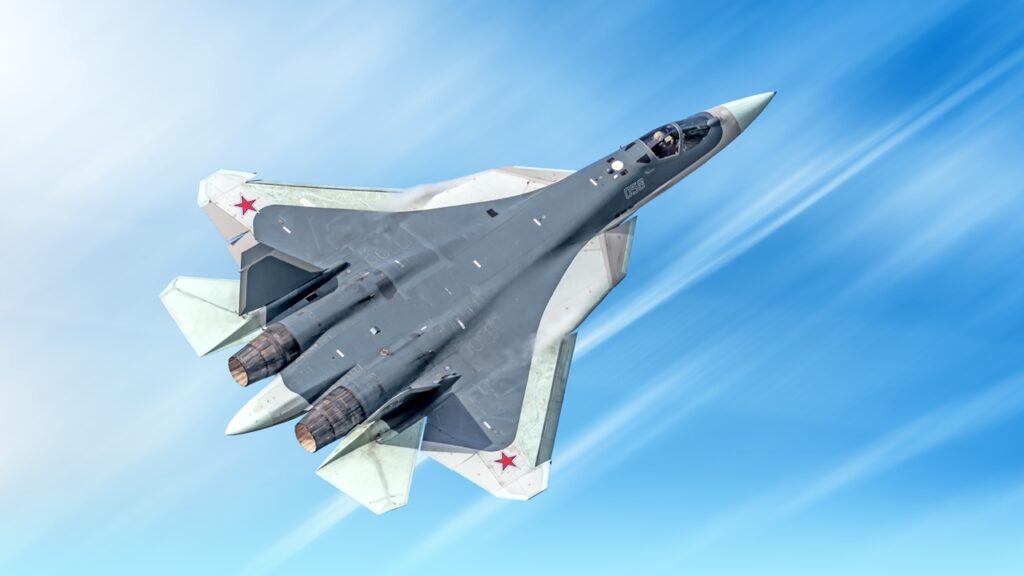
- Year Introduced: 2020
- Number Built: Between 10 and 22
- Length: 20.1 m (65 ft 11 in)
- Height: 4.6 m (15 ft 1 in)
- Wingspan: 14.1 m (46 ft 3 in)
- Weight:
- 18,000 kg (39,683 lb) empty
- 35,000 kg (77,162 lb) maximum takeoff weight
- Engine: Two Saturn AL-41F1 afterburning turbofan engines
- Top Speed: Mach 2 (2,135 km/h, 1,327 mph) at altitude
- Range: 3,500 km (2,200 mi) subsonic, 1,500 km (930 mi) supersonic
- Service Ceiling: 20,000 m (65,600 ft)
- Loadout: 12 hardpoints; mix of air-to-air and air-to-ground weapons
- Aircrew: 1
The Su-57 is Russia’s first operational fifth-generation fighter. Production limitations have hindered the aircraft’s functional presence in Russia’s fleet, with fewer than two dozen believed to be in service. With respect to stealth performance, the Su-57 lags behind its Western counterparts. The aircraft’s RCS is estimated to be roughly 0.1m2 from the front. However, with RAM coatings, internal weapons bays, and a reduced IR signature, the Su-57 is a respectable Russian effort at making a stealth fighter jet and clearly, Russia’s most stealth-capable aircraft yet.
8. India’s AMCA Is Built for Multirole Operations
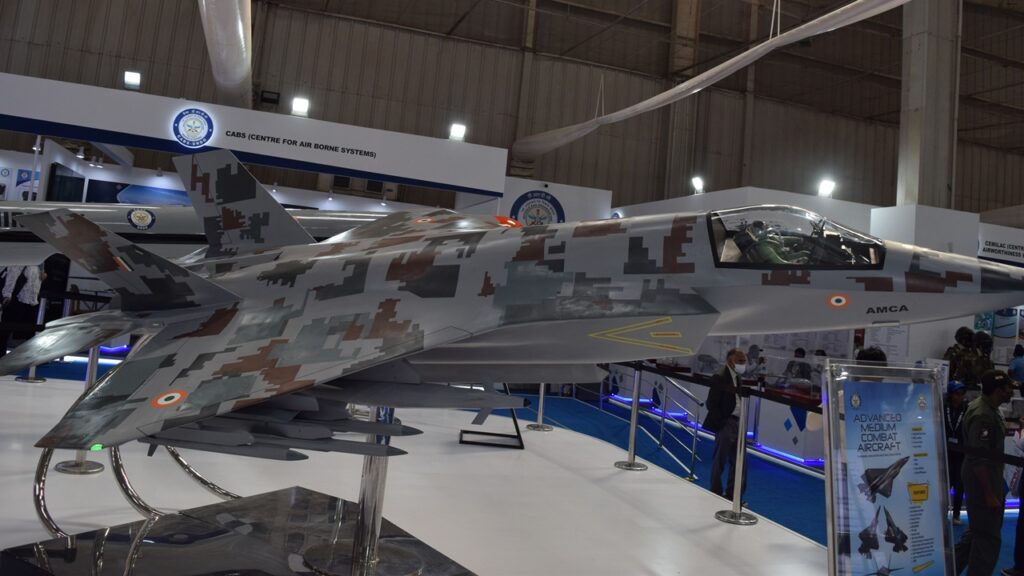
- Year Introduced: Not yet introduced
- Number Built: None (prototypes under construction)
- Length: 18 m (59 ft 1 in)
- Height: 4.5 m (14 ft 9 in)
- Wingspan: 11.13 m (36.5 ft)
- Weight:
- Empty weight: 12,000 kg (26,455 lb)
- Gross weight: 18,000 kg (39,683 lb)
- Max takeoff weight: 27,000 kg (59,525 lb)
- Engine: Unknown
- Top Speed: 2,600 km/h (1,600 mph, 1,400 kn)
- Range: 3,240 km (2,010 mi, 1,750 nmi)
- Service Ceiling: 20,000 m (65,000 ft)
- Loadout:
- 23-mm GSh-23 cannon
- 14 hardpoints (internal + external) with a capacity of around 7 tons.
- Aircrew: 1
While not in service quite yet, India’s forthcoming Advanced Medium Combat Aircraft (AMCA) is expected to make its maiden flight in the late 2020s. The program boasts a fifth-generation stealth fighter platform, built for multirole operations. The AMCA is expected to feature internal weapons bays, advanced RAM, and stealth shaping. While the AMCA has not proven herself yet, the finished product is expected to have an RCS in the 0.01m2 range.
7. The Kai KF-21 Boramae’s Future Iterations Will Improve Its Stealth Features
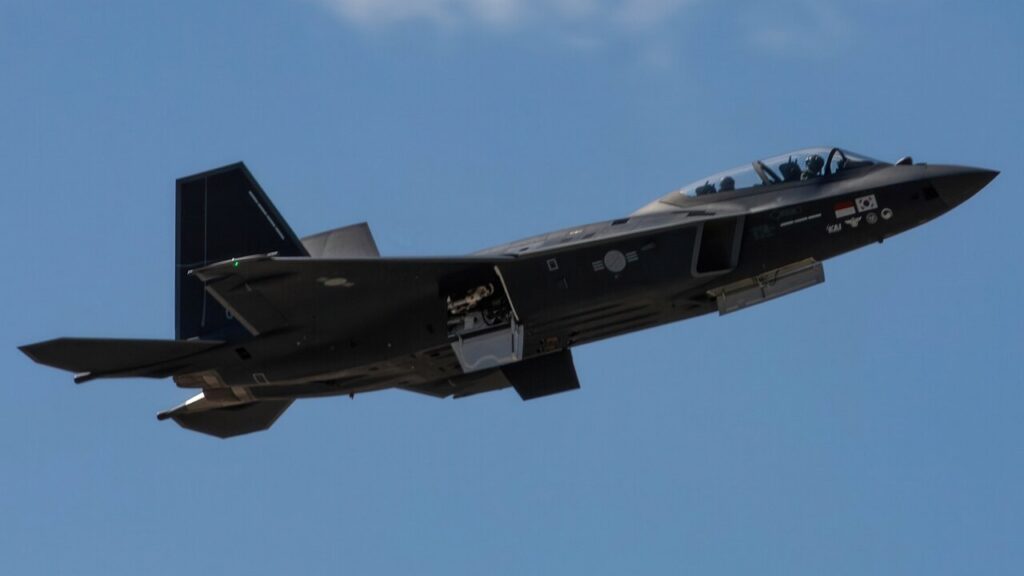
- Year Introduced: 2021
- Number Built: 6 (prototypes)
- Length: 15.2 m (50 ft)
- Wingspan: 9.8 m (32 ft)
- Weight:
- Empty weight: 9,300 kg (20,500 lb)
- Max takeoff weight: 20,900 kg (46,000 lb)
- Engine: One P&W F100 or GE F110
- Top Speed: Mach 1.89
- Loadout:
- Nine hardpoints and no internal weapons bay
- One 20-mm M61A2 Vulcan rotary autocannon, 480 rounds
- Aircrew: 1-2
First flown in 2021, the KF-21 Boramae is a 4.5-generation fighter. The aircraft has undergone Block II upgrades, which introduced internal weapons bays and advanced stealth features to complement the existing low-RCS shaping and RAM coatings. The KF-21 has a stealth performance comparable to early F-35 prototypes. Although it is not yet at the current F-35’s performance level in terms of stealth, it’s creeping closer. The KF-21’s projected RCS is 0.1m2 in future versions.
6. Turkey’s KAAN Is Targeting an RCS Comparable to the F-35
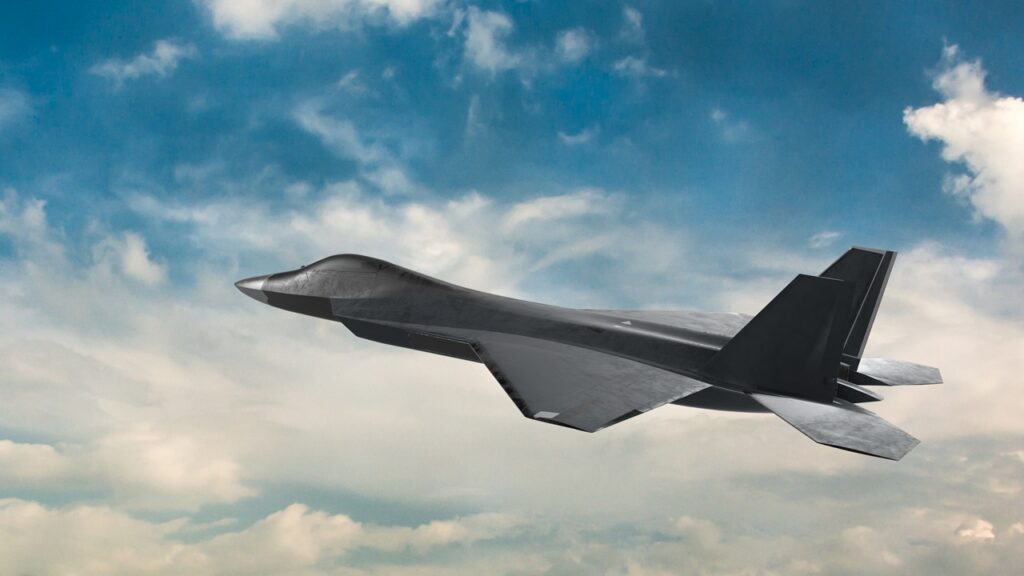
- Year Introduced: 2023
- Number Built: 1 (prototype)
- Length: 20.3 m (66 ft 7 in)
- Height: 5 m (16 ft 5 in)
- Wingspan: 14 m (45 ft 11 in)
- Weight: 34,750 kg (76,500 lb)
- Engine: Two General Electric F110-GE-129 turbofan
- Top Speed: Mach 1.8
- Service Ceiling: 16,764 m (55,000 ft)
- Loadout:
- Guns: 30×113 mm cannon
- Hardpoints: Eight internal, three per wing; total six external
- Aircrew: 1
Turkey’s KAAN aircraft made its maiden flight in 2023, representing Ankara’s first attempt at fielding a homegrown fifth-generation stealth fighter. Outfitted with stealth shaping, advanced avionics, and a large internal weapons bay, the KAAN appears to be targeting an RCS level comparable to the F-35. While the KAAN is still in development, the potential of the platform’s stealth performance is immense. However, it will depend upon execution, especially with respect to engine sourcing and the integration of advanced RAM coatings.
5. The Lockheed Martin F-117 Nighthawk Paved the Way for Future Stealth Platforms
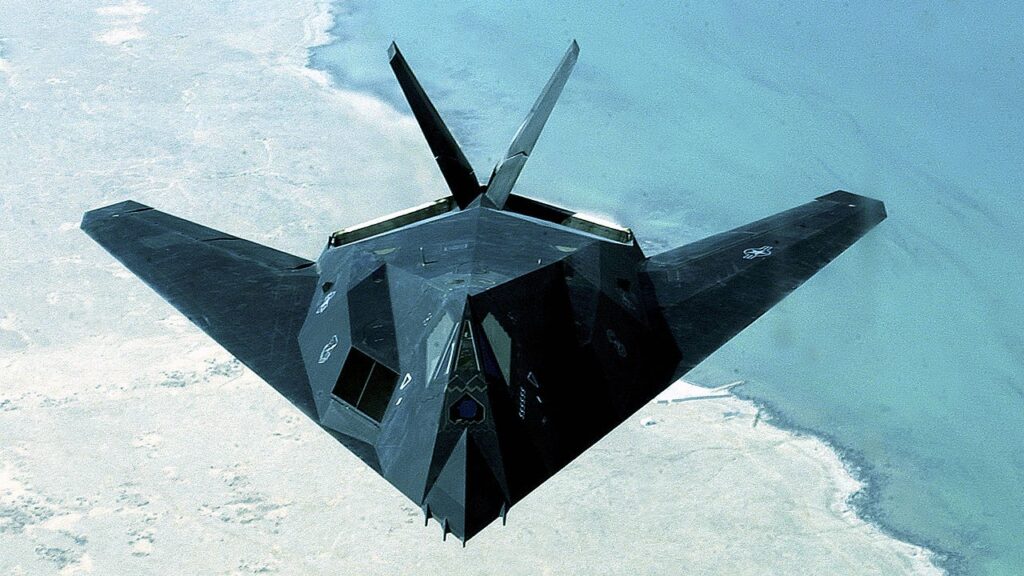
- Year Introduced: 1983
- Number Built: 64
- Length: 65 ft 11 in (20.09 m)
- Height: 12 ft 5 in (3.78 m)
- Wingspan: 43 ft 4 in (13.21 m)
- Weight: ~52,500 lb (23,814 kg) maximum takeoff weight
- Engine: Two General Electric F404-F1D2 turbofans (non-afterburning)
- Top Speed: Mach 0.92 (~684 mph, ~1,100 km/h)
- Range: ~930 nautical miles (~1,720 km)
- Service Ceiling: ~45,000 ft (~13,700 m)
- Loadout: Up to 5,000 lb of internal weapons (GBU-10/12/27, JDAMs, BLU-109, B61 nuclear bomb)
- Aircrew: 1
Although retired in 2008, the Lockheed Martin F-117 Nighthawk remains legendary for offering a revolutionary leap in low-observable technology. With a unique faceted design composed of flat panels, the F-117 was optimized for deflecting radar waves, though the jet lacked the broadband stealth shaping of more modern aircraft. During F-117’s heyday, the jet was virtually undetectable, fully capable of flying undisturbed through dense enemy defenses during Desert Storm and in Yugoslavia. However, air defense systems caught up to the F-117, rendering the jet’s RCS less impressive. The F-117 paved the way for every stealth platform that followed.
4. The Northrop Grumman B-2 Spirit Was Well Ahead of Its Time
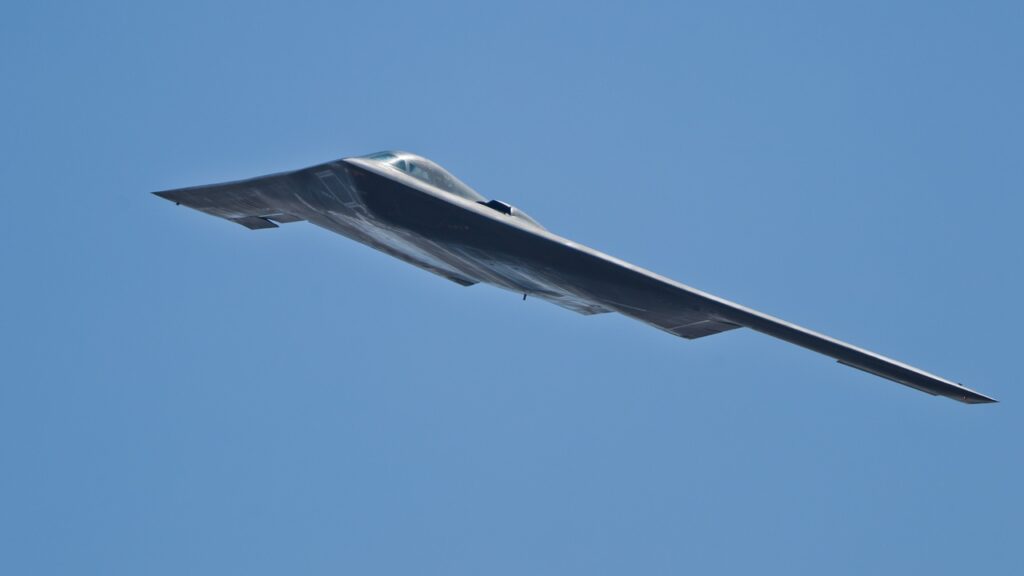
- Year Introduced: 1997
- Number Built: 21
- Length: 69 ft 0 in (21.0 m)
- Height: 17 ft 0 in (5.18 m)
- Wingspan: 172 ft
- Weight:
- Empty weight: 158,000 lb (71,700 kg)
- Gross weight: 336,500 lb (152,200 kg)
- Max takeoff weight: 376,000 lb (170,600 kg)
- Top Speed: High subsonic
- Service Ceiling: 50,000 feet
- Loadout: 40,000 lb
- Aircrew: 2
During the 1990s, the B-2 Spirit set the standard for stealth bombers. The aircraft’s flying wing design, free of vertical surfaces, minimizes radar returns from nearly all angles. Indeed, the B-2’s RCS is so small that it appears on radar as a bird-sized object. The aircraft’s RCS is reportedly in the 0.1 to 0.05 m2 range, with some estimates placing the frontal RCS as low as 0.0001m2. With buried engines and serpentine air intakes, the B-21 also suppresses its infrared signature, which adds to its stealth capability. While the B-2 was well ahead of its time when it first debuted, the advent of increasingly sophisticated air-defense systems has made the B-2 less effective.
3. The F-35 Lighting II Is the Stealthiest Multirole Fighter
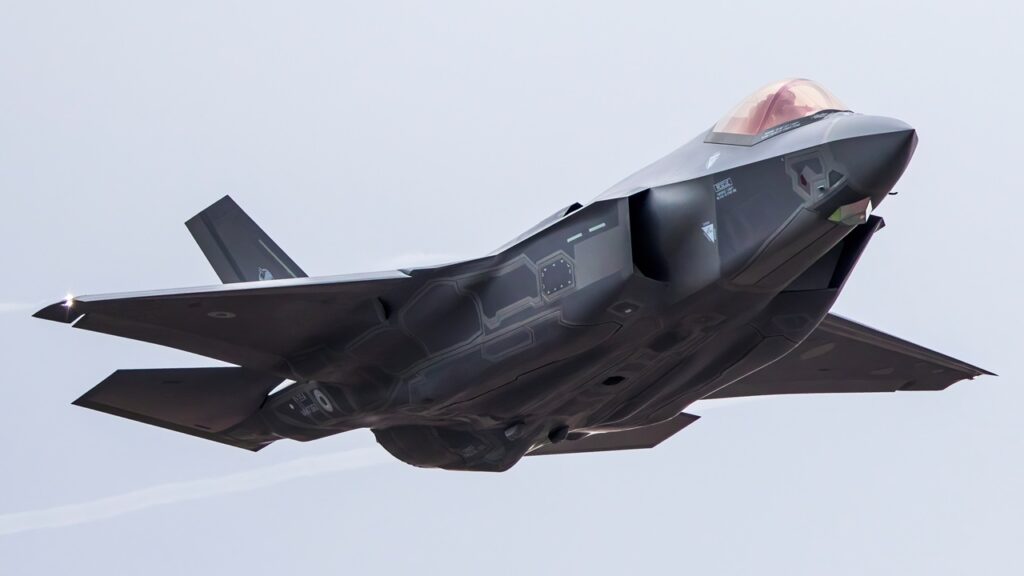
- Year Introduced: 2015
- Number Built: Over 1,000 (as of 2025)
- Length: 51 ft 4 in (15.7 m)
- Height: 14 ft 4 in (4.36 m)
- Wingspan: 35 ft (10.7 m)
- Weight:
- Empty: 29,300 lb (13,300 kg)
- Standard conditions: ~49,000–50,000 lb (22,200–22,700 kg) (typical combat configuration)
- Maximum takeoff weight: 70,000 lb (31,800 kg)
- Engine: One Pratt & Whitney F135-PW-100 afterburning turbofan
- Top Speed: Mach 1.6 (~1,200 mph or 1,930 km/h)
- Range: ~1,380 mi (2,220 km) with internal fuel
- Service Ceiling: 50,000 ft (15,240 m)
- Loadout:
- One GAU-22/A 25-mm rotary cannon (internal on F-35A only)
- Internal bays: Up to four AIM-120 AMRAAMs or two bombs and two AMRAAMs
- External hardpoints: Up to 18,000 lb (8,160 kg) of ordnance (compromises stealth)
- Aircrew: 1
While not as stealthy as the F-22, the F-35 Lightning II is the stealthiest multirole fighter currently in operation, anywhere in the world. The aircraft’s RCS is estimated to be around 0.0015m2 m², which is about five to 10 times greater than the F-22’s RCS from most angles. While compromises were made to the F-35’s stealth capabilities, the jet is still stealthy enough for first-day strike missions while keeping affordability and versatility in mind. The F-35’s reduced RCS was achieved through blended body shaping, internal weapons storage, and RAM coatings. The F-35 is stealthiest from the front and sides—although the jet remains fairly detectable from the rear.
2. The F-22 Raptor Is Designed for Air Dominance
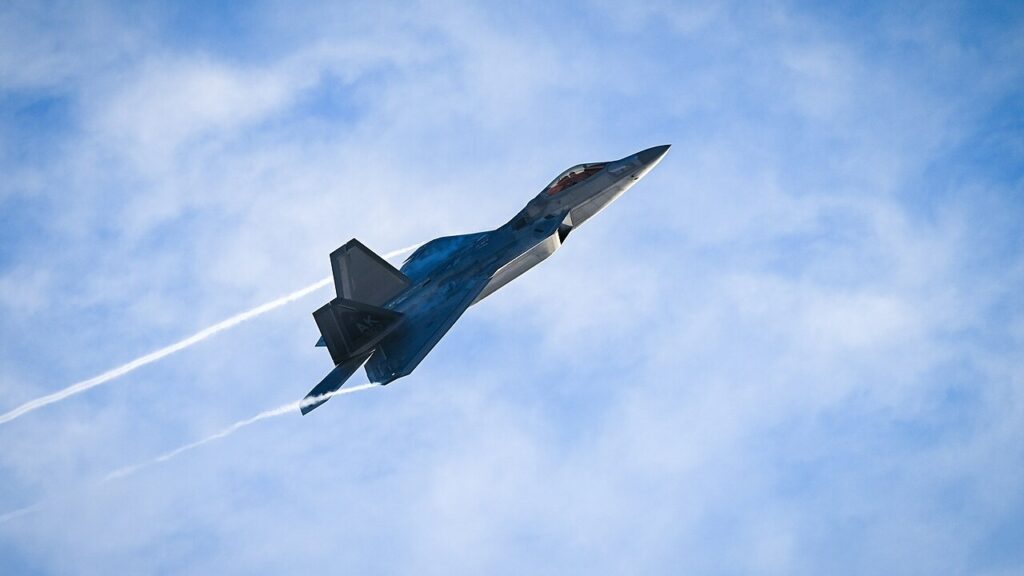
- Year Introduced: 2005
- Number Built: 195 (including eight test aircraft)
- Length: 62 ft 1 in (18.9 m)
- Height: 16 ft 8 in (5.1 m)
- Wingspan: 44 ft 6 in (13.6 m)
- Weight:
- Empty: 43,340 lb (19,700 kg)
- Standard conditions: ~64,800 lb (29,400 kg) (typical combat configuration)
- Maximum takeoff weight: 83,500 lb (37,900 kg)
- Engine: Two Pratt & Whitney F119-PW-100 turbofans with thrust vectoring
- Top Speed: Mach 2.25 (~1,500 mph or 2,414 km/h)
- Range: ~1,839 mi (2,960 km) with internal fuel
- Service Ceiling: 65,000 ft (19,812 m)
- Loadout: M61A2 20 mm rotary cannon; up to six AIM-120 AMRAAMs and two AIM-9 Sidewinders in internal bays; external hardpoints
- Aircrew: 1
The F-22 Raptor is the world’s stealthiest fighter aircraft. Designed for air dominance, the F-22 is calibrated to evade detection. Accordingly, the F-22’s frontal RCS is relatively low, measuring at 0.0001m2, while from the side, the aircraft’s RCS is 0.001m2. The F-22’s designers were able to achieve such low RCS thanks to advanced shaping technology, seamless panel alignment, and radar-absorbing materials. The use of an internal weapons bay further lowers the F-22’s radar signature. In addition, the engine inlets and nozzles were built to mask radar and infrared signatures. Although the F-22 is not as stealthy from all angles as the B-21, it is challenging to detect from head-on, the most critical vector in air-to-air engagements.
1. The B-21 Raider Will Represent the Pinnacle of Stealth Design
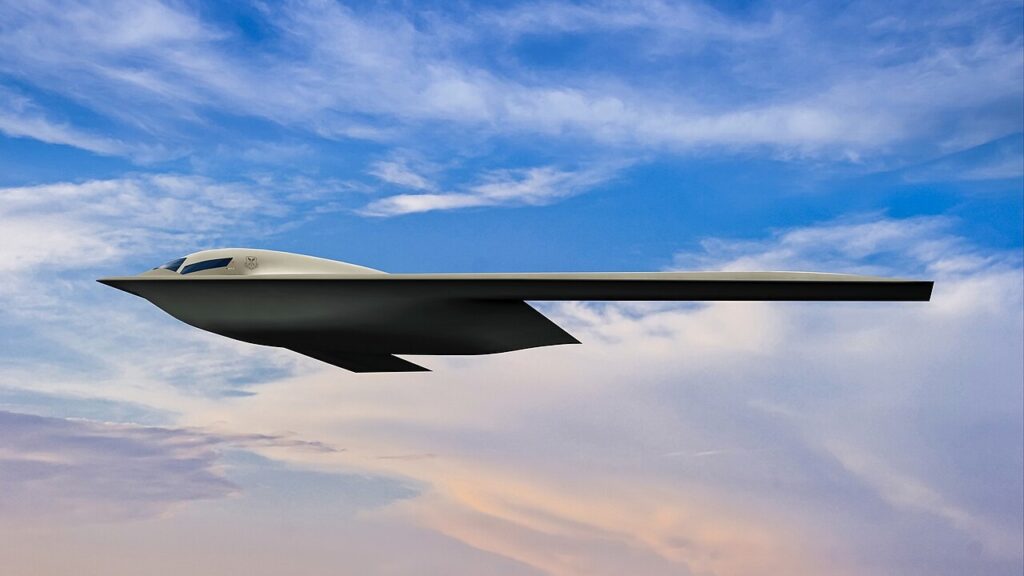
- Year Introduced: Prototype phase (expected introduction 2027)
- Number Built: 3 (prototypes)
- Length: 54 ft (16 m)
- Height: Unknown
- Wingspan: 132 ft (40 m)
- Weight:
- Empty weight: 70,000 lb (31,751 kg)
- Max takeoff weight: 180,000 lb (81,647 kg)
- Engine: Unknown
- Top Speed: Mach 0.8+
- Range: Unknown
- Service Ceiling: 50,000 ft (15,000 m)
- Loadout:
- Hardpoints: One primary weapons bay with a capacity of 20,000 lb (9,100 kg) weapon load
- Missiles: AGM-181 LRSO
- Bombs: JDAM family of munitions
- Aircrew: 2
When the B-21 Raider arrives on active duty later this decade, the aircraft will represent the pinnacle of modern stealth technology. Built around the inherently stealthy flying wing design, the B-21 features cutting-edge radar-absorbing materials and intentional signature management across radar, infrared, visual, and acoustic spectrums. The B-21’s RCS is expected to be significantly lower than the already stealth-capable B-2 Spirit, which the B-21 is scheduled to replace. While the B-21’s RCS is classified, it could be as low as 0.0001m2. The aircraft is understood to be the zenith in terms of low observability and survivability in contested environments.
About the Author: Harrison Kass
Harrison Kass is a senior defense and national security writer at The National Interest. Kass is an attorney and former political candidate who joined the US Air Force as a pilot trainee before being medically discharged. He focuses on military strategy, aerospace, and global security affairs. He holds a JD from the University of Oregon and a master’s in Global Journalism and International Relations from NYU.
Image: Wikimedia Commons.


















